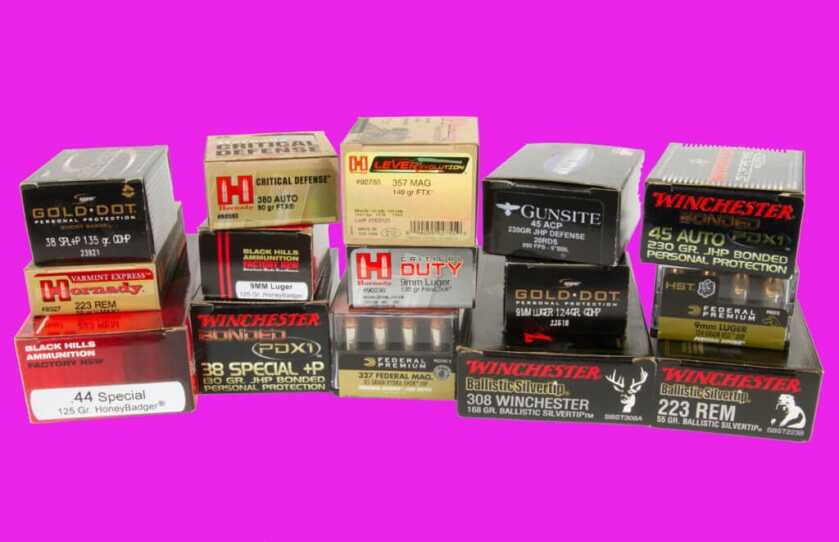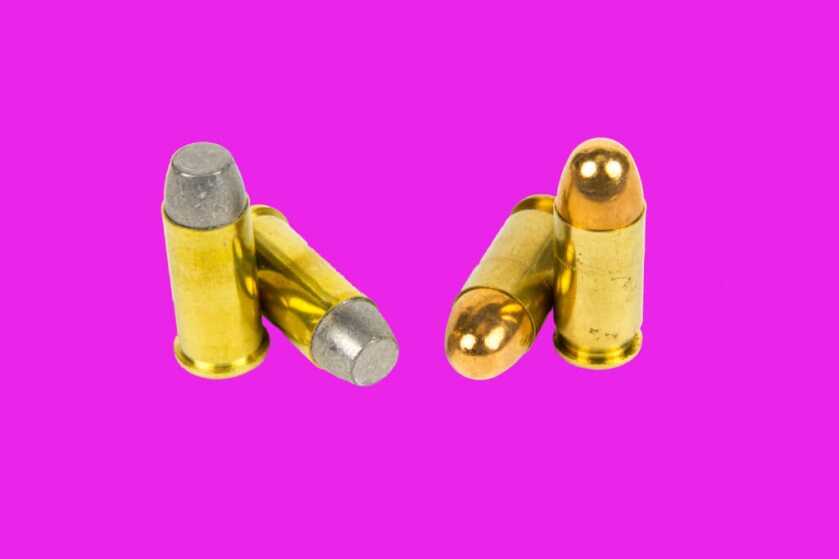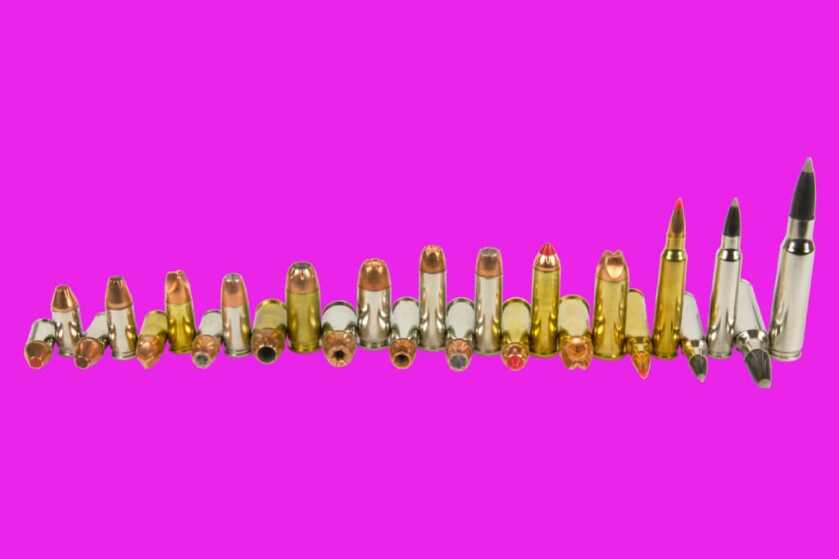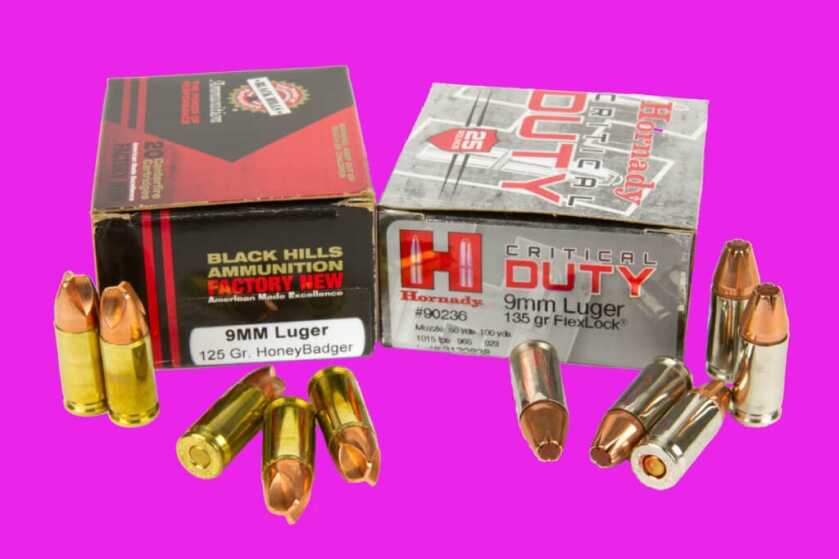As this is written, there is a severe ammunition shortage. That’s due to unprecedented demand from both new and long-time gun owners. It’s not because ammo manufacturers have slowed down production. They are working hard to produce as much ammo as they can as fast as they can. But demand is so great that it will take a long time for supplies to get back to what used to be normal – if those supplies ever do. But that’s a subject on which another article could be written. And this article is about selecting the right ammunition to power your life-saving firearm.
Don’t take the selection lightly. There are so many good self-defense loads made these days, that deciding which one to buy can be confusing. For simplification though, if you buy ammunition for self-defense from a well-known manufacturer that makes that load specifically for self-defense, you are probably making a wise choice.

It used to be that there were not a lot of choices in self-defense ammunition. Most of it was pretty much the same from manufacturer to manufacturer. And it didn’t differ a great deal from the ammunition made for general shooting. It was mostly full metal jacketed or lead flat or round nose bullets. Some were jacketed soft points. But over the years, especially in the last couple of decades, designers and engineers have made huge improvements in how bullets perform when hitting an attacker.
Probably the most important event in history as regards self-defense ammunition happened in Miami, Florida in 1986. It was also a tragic event because several people, including law enforcement officers, were killed when it happened. But one of the results of that event – often referred to these days as the Miami Shootout – was that the FBI developed minimum standards and tests for the ammunition it would issue to its agents.

Those standards and tests were adopted by most law enforcement agencies and ammunition manufacturers for self-defense or law enforcement ammunition. Basically, those standards require that the ammunition performs to a minimum level when striking a human target. The goal of all the standards is to make sure ammunition is as good as it can be at stopping a felonious attacker.
For the most part, those requirements can apply to law enforcement use as well as use by non-sworn citizens in protecting lives against attacks by bad guys. And they can be applied to ammunition used in handguns, rifles, and shotguns. Since most manufacturers of self-defense ammunition these days compete for orders from law enforcement agencies, and most law enforcement agencies follow those FBI standards, most self-defense ammunition made by recognized manufacturers is built to meet those standards.
There are a few ways that an attacker can be stopped. And that’s the goal for a person who is defending him or herself from a felonious attack. It’s not to kill the attacker, it’s to stop the attack so that the person defending is not hurt. This was discussed extensively in my previous article published here – The What & The Why: Kill or Stop – so I won’t go into detail. But the bottom line is that it may require an injury to the attacker that is so severe that the attacker cannot physically continue the attack. Law enforcement recognizes this reality, so wants ammunition that has the greatest likelihood of damaging an attacker severely enough to instantly stop a determined attack.

There is no nice way to say this. Stopping some attackers require that tissue be damaged severely. So many law enforcement agencies insist that ammo used must meet the FBI standards. Since shooting people to test the effectiveness is not moral, humane, or practical, the FBI relies on tests involving shooting bullets into ballistic gelatin which is basically gelatin mixed with water in a ratio of one to nine. The result is what is referred to as 10% ordnance or ballistic gelatin.
The FBI wants bullets that penetrate to a minimum depth of about 12 inches. And since law enforcement officers and FBI agents may need to shoot through a barrier to hit the target, the FBI insists that bullets be tested in not only bare gelatin, but also after passing through various barriers like clothing, sheet metal to simulate a car door, wallboard, wood, and glass. These barriers, especially glass, make bullets behave differently than if they were shot into bare gelatin.

These gelatin tests are used for bullets of many different calibers that might be used for defense or law enforcement including rifle, pistol, and shotgun rounds. These tests have been adopted by almost, if not all, law enforcement agencies, so manufacturers also test many calibers sold to non-sworn citizens and law enforcement officers for off duty use that might be used for self-defense. Consequently, the cartridge does not necessarily have to be a service round, like 9mm Luger or 5.56mm NATO, to have been tested. And if you look hard, you may be able to find gelatin test data, or even photos of tests, for many of the self-defense rounds you might consider using.
Although there are others not listed here that some people use for self-defense, the ones most commonly used are .380 ACP, .38 Special, .357 Magnum, .44 Special, .44 Magnum, .45 Colt, 9mm Luger, .40S&W, .45 ACP, and .357 SIG for handguns. For rifles, the most common are .223 Remington/5.56 NATO, .30-30 Winchester, 7.62x39mm Russian, .308 Winchester/7.62mm NATO, and .30 Carbine. For shotguns, it is most common to see 12 and 20 gauge shells. Then there are some foreign rounds primarily found in other countries that show up in the US from time to time and they include rounds for the Makarov and Tokarev pistols.

Whatever your chosen round for self-defense, most experts agree that full metal jacketed (FMJ) or lead round-nosed (LRN) ammo is not the best choice. It is better to use a round specifically designed for self-defense, and those are usually cartridges loaded with a hollow point (HP) bullet. Some variations though are HP bullets that have a polymer insert or other object in the HP. That insert is designed to assist in the expansion of the bullet.
There is another class of bullet that is seeing some acceptance for self-defense that is not an HP design. It is characterized primarily by the new HoneyBadger line from Black Hills Ammunition. Black Hills teamed with Lehigh Defense to come up with a solid copper bullet with flutes in the nose. There is similar ammunition called Inceptor ARX. The bullet is not designed to expand, but instead, the flutes throw high-speed tissue radially out from the path of the bullet. This high-speed tissue does a lot of damage to the surrounding tissue, creating a severe wound. Some law enforcement agencies have already bought it for duty use.

Because the HoneyBadger bullet does not have to expand to cause tissue damage commonly referred to as a temporary cavity – that is tissue damage caused by the shock of the bullet passing through tissue – the velocity of the bullet is not as critical. Neither is bullet weight. In fact, Black Hills loads the HoneyBadger line with bullets of a lighter weight than conventional HP ammo. The velocity is higher, but the felt recoil is lower. The change in the ammunition is so pronounced that the point of impact often changes significantly when a HoneyBadger load is substituted for a normal HP or FMJ load. And barriers don’t seem to affect HoneyBadger ammo much, if at all.
A few words about the gelatin test. Gelatin is designed to approximate human flesh, mainly muscle tissue. But it is not exactly the same. For one thing, humans have bones and the gelatin doesn’t. For another, humans react differently to trauma. Some people will not give up until they physically cannot continue to attack. Others will give up when someone tells them to. Gelatin tests are an approximation of the damage a bullet will inflict. The biggest value of the test though is that the damage one bullet causes can be compared directly to the damage that another bullet causes. And that helps in comparing and choosing loads.

Another thing you should consider when choosing a self-defense load is how easy it will be to justify your choice if you are forced to shoot someone, and a prosecutor with less than honorable intentions challenges your choice implying, or saying outright, that you chose the load you did in order to kill the person you shot.
Massad Ayoob, a firearms instructor, expert witness, and trainer of defense attorneys, suggests that it will be easier to defend your choice if the ammunition is the same as that chosen by law enforcement. It’s your decision to make, but that is something to consider and it’s from a real expert who has participated directly in many shooting trials.
And besides, if a law enforcement agency and the FBI trust the lives of their personnel with a particular load, it is probably because they have done some research and testing. Okay, you may say it is the cheapest ammo the agency can get, but it’s actually most likely the cheapest ammo the agency can get that meets that agency’s minimum standards.
And that’s the what and the why of it.

Instead of trying to figure out what defense ammo to try or carry?
Check with your local police or the Sheriffs dept. and see what they use for duty ammo.
My Sheriff Dept. uses white box federal HI-SHOK, JHP in .45 auto..
So if it’s good enough for them? It”s just fine for me..
And as far as this ammo shortage goes? Here is food for thought!!
Why during Desert Storm? Our military forces were burning up millions of rounds of all types of ammo per month or more,, yet there wasn’t an ammo shortage back here at your local gun store??
Or why wasn’t there a shortage when obama was the gun salesman of the year
Make’s a fella wonder???
It is always challenging to pick a self defense round. I will have to check out the honey badger ammo. Thanks for a great article.
Good article, and let’s hope it gets into the hands of those new to the firearms world.